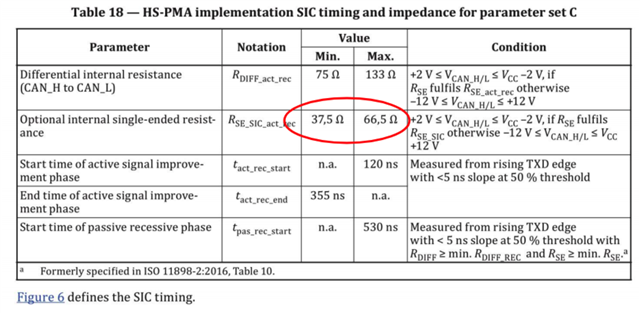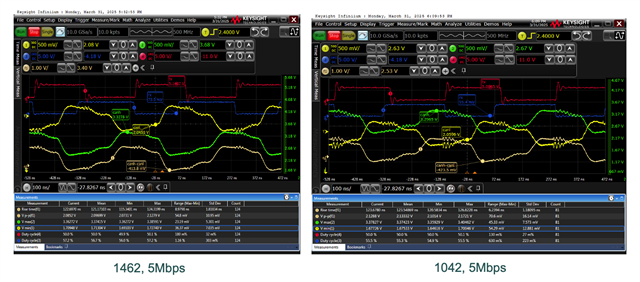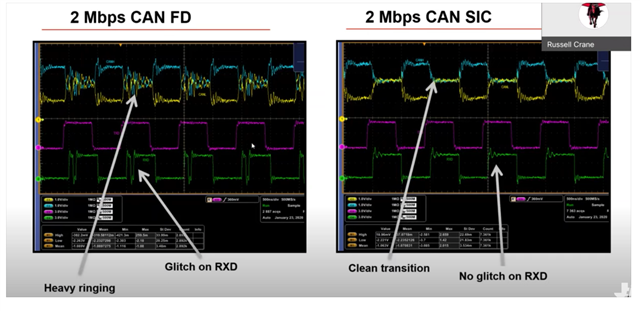Tool/software:
Hi TI CAN Expert,
I want to understand deeper about CAN SIC value.
My current understanding is:
- When the CAN transceiver works as transmitter without 120ohm termination, SIC is better than non-SIC.
- When the CAN transceiver works as transmitter with 120ohm termination, there is no difference for SIC and non-SIC.
- When the CAN transceiver works as receiver without 120ohm termination, there is no difference for SIC and non-SIC.
- When the CAN transceiver works as receiver with 120ohm termination, there is no difference for SIC and non-SIC
That means SIC value is only critical when the transceiver of a CAN node works as transmitter without 120ohm termination, it can improve the signal integrity. Because SIC's main point is to provide low impedance when the transceiver is going to transmit dominant to recessive. During that period, the impedance is high if without SIC, so reflection is critical.
Do I understand correctly?
Regards
Nic






